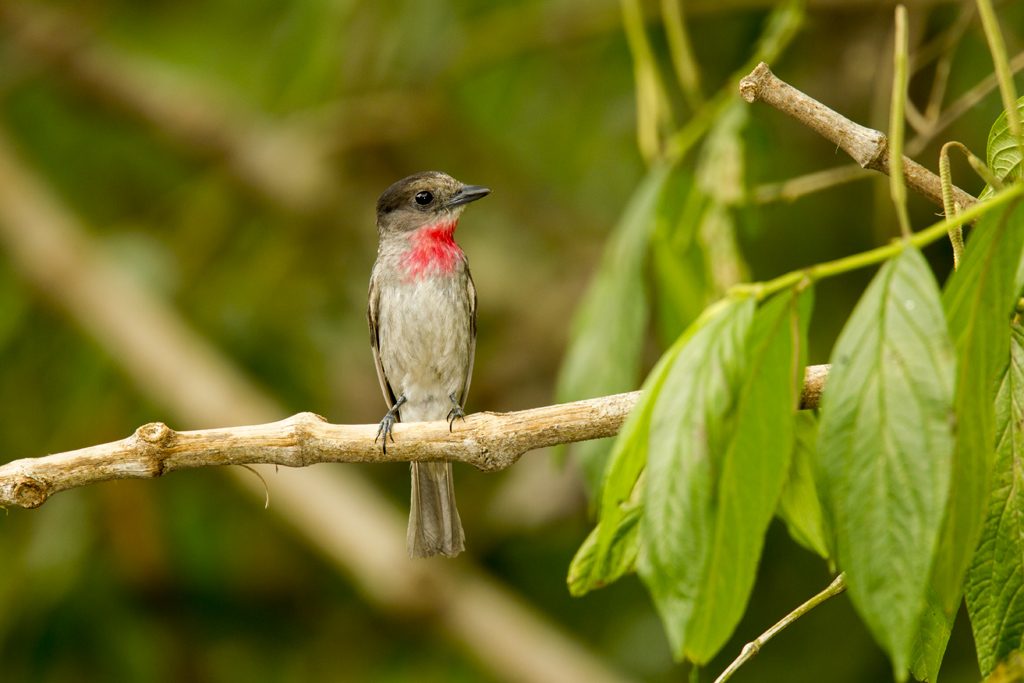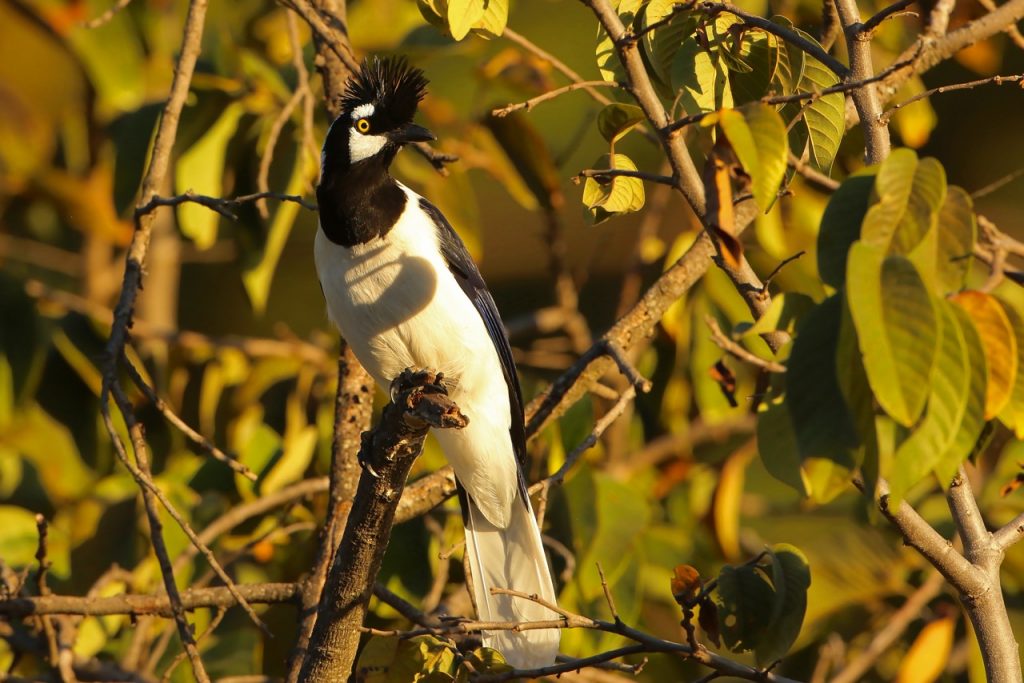West Mexico: Durango Highway to Colima Introduction
| Intro | Itinerary | Tour Pricing & Information | Gallery | Bird List | Registration |
February 27 – March 14, 2019
This tour is a specialized itinerary designed to concentrate our efforts in finding as many of the endemic and specialty bird species of Western Mexico as possible.
Western Mexico holds a large number of endemic bird species, some of them among Mexico’s most spectacular birds. Many of these taxa are concentrated in several ‘endemic regions’ spread around the country. It is our goal to visit three of these regions over a two week period. While we will visit areas in Sinaloa, along the Durango Highway and San Blas, the majority of our time will be spent in the bird rich areas of Colima and Jalisco and the twin volcanos that are home to a staggering array of bird diversity.
Entering Mexico via Mazatlan shortens our route along Mexico’s Pacific Coast allowing us more time in the field. While our first morning is spend birding nearby scrubby foothills, we’ll soon begin our journey uphill via the Durango Highway. Turning inland toward Durango, habitats change from brushy, secondary thorn forest margins separated by fields and houses to hillsides covered with beautiful thorn forest. Rufous-bellied Chachalaca, Elegant Quail, Mexican Parrotlet, Lilac-crowned Parrot, Colima Pygmy-Owl, White-naped Swift, Golden-crowned Emerald, Berylline and Sparkling-tailed Hummingbirds, Citreoline Trogon, Russet-crowned Motmot, Black-throated Magpie-Jay, Purplish-backed Jay, Happy and Sinaloa Wrens, Black-capped Gnatcatcher, Blue Mockingbird, Fan-tailed and Rufous-capped Warblers, Blue Bunting and Rusty-crowned Ground-Sparrow top the list of specialties. As spectacular as this list may appear, the real objects of our search here are found in the pine woodlands at higher elevations—Tufted Jay and Eared Quetzal—certainly two of Mexico’s most impressive and interesting birds. Although the jay can be conspicuous at times, the quetzal is quite the opposite. Mountain Trogon, Gray-crowned Woodpecker, Mountain Pygmy-Owl, White-striped Woodcreeper, Pine Flycatcher, Gray-collared Becard, Spotted Wren, Russet Nightingale-Thrush, Aztec Thrush, Gray Silky-flycatcher, Crescent-chested and Red Warblers (here the ‘gray eared’ form), Red-headed Tanager, Rufous-capped and Green-striped Brush-Finches, Hooded Grosbeak and Black-headed Siskin are a few of the endemics we expect to find. We have two days to fully explore this beautiful area, with vistas from a perch overlooking Barranca Rancho Liebre sure to take your breath away. At least one evening will be spent looking for owls as Stygian Owl has been found near the barranca.
Our time in San Blas will be necessarily shorter than our usual stay of a week or more. A fine birding area, compared to other areas on our schedule San Blas holds far fewer of the specialty birds we are seeking. During our first afternoon here we’ll look for Military Macaw, Colima Pygmy-Owl, Mexican Hermit, San Blas Jay, Sinaloa Crow, many of the same specialties we searched for near Mazatlan and an evening outing for Buff-collared Nightjar if we were unsuccessful on previous outings. Our first morning here is spent aboard small boats gliding quietly through coastal mangroves. After exploring the estuary admiring numerous waterbirds, especially Rufous-necked Wood-Rail, Boat-billed Heron and a huge variety of herons, egrets and raptors, we’ll circle a pair of offshore rocks searching or Blue-footed and Brown Boobies and perhaps a pelagic species cruising close to shore. We’ll also be birding areas that hold a number of new birds for our group. Species that I expect to see include Rufous-bellied Chachalaca, Elegant Quail, Lesser Roadrunner, Colima Pygmy-Owl, Mexican Woodnymph and Bumblebee Hummingbird (as well as a host of wintering northern hummers for our Mexican lists), White-striped Woodcreeper, Spotted, Happy and Sinaloa Wrens and Red-headed Tanager.

Mexican Woodnymph – An endemic species with a tiny range of less than 120 miles long along the Pacific coast – Photo by Rick Bowers ©
One night along the Pacific coast enroute to Colima gives us a chance to explore some of our favorite, lesser-known locales. Impressive wetlands, thick thorn forest and vast agricultural areas may yield Rufous-necked Wood-Rail, Mexican Parrotlet, San Blas Jay and Yellow-winged Caçique among the more common species.
Thorn forest habitat is much disturbed along Mexico’s Pacific coast. Two relatively undisturbed expanses of this thick, dry scrub provide ample opportunity to complete our list of desired species. While these sites are our primary areas for Flammulated Flycatcher, Rosy Thrush-Tanager and Red-breasted Chat, the complete list of endemics we expect to see is full of spectacular birds. Banded Quail, West Mexican Chachalaca, Lilac-crowned Parrot, Lesser Roadrunner, Colima Pygmy-Owl, Golden-crowned Emerald, Citreoline Trogon, San Blas Jay, Happy, Sinaloa and White-bellied Wrens, Black-capped Gnatcatcher, Fan-tailed Warbler, Blue and Orange-breasted Buntings, Black-vented Oriole and Yellow-winged Caçique are the primary members of this list. Similar habitat inland offers back-up support in case any species are missed while providing our most reliable areas in Colima/Jalisco for Banded Quail, Balsas Screech-Owl, Colima Pygmy-Owl and Buff-collared Nightjar.
The bulk of our time during this birding adventure will be spent in the well known birding states of Colima and Jalisco. This area possesses some of the finest birding to be found in tropical America. The quality and number of birds found in this habitat rich area is truly amazing. My favorite single birding location in all of Mexico is found here, Los Volcanes de Colima. And, as the birding is so spectacular, we are allowing three full days to fully explore this one site! Home to a wide variety of endemics, Volcan de Fuego is an experience that needs to be savored slowly. And after visiting a number of other memorable birding spots that is exactly what we will do. We begin along the Jalisco coast in thorn forest, move inland to fields, ponds & wetlands, visit more dry forest and then climb through changing habitats on the volcano that include scattered oaks, dry oak/pine forest, humid oak/pine forest and finishing with pine/fir forest just below timberline. This diversity of habitats in such a small geographical area is the reason the birding here is so spectacular. Many endemics, beautiful scenery and comfortable lodging provide an unbeatable combination.
The twin volcanos Volcan de Fuego & Volcan de Nieve (literally Volcanoes of Fire and Ice) that dominate the skyline above Colima are, in my opinion, the single best birding area in Mexico. Due to changing habitats draped across these magnificent volcanos, fields and thorn scrub on the lower flanks through pine/fir forest near treeline, the variety of birds to be found here are truly amazing. Here we have our best chance of seeing Long-tailed Wood-Partridge, Singing Quail, Thick-billed Parrot (found in the winter season only), Bumblebee Hummingbird, White-striped Woodcreeper, Gray-collared Becard, Spotted Wren, Aztec Thrush (present here in wintertime flocks), Russet Nightingale-Thrush, Dwarf Vireo, Chestnut-sided Shrike-Vireo, Green-striped Brush-Finch, Collared Towhee and Black-backed (Abeille’s) Oriole. Night birding on the volcanos has its prizes to be uncovered as well. Whiskered Screech-Owl, Mountain Pygmy-Owl, Stygian Owl, Mexican Spotted Owl, Eared Poorwill, Buff-collared Nightjar and Mexican Whip-poor-will top our list of possibilities. It is our intent to find ALL of these specialty nightbirds, thus our five night stay in the area.
Our return home is from the international airport at Puerto Vallarta giving folks the largest selection of departing flights possible.
| Intro | Itinerary | Tour Pricing & Information | Gallery | Bird List | Registration |



